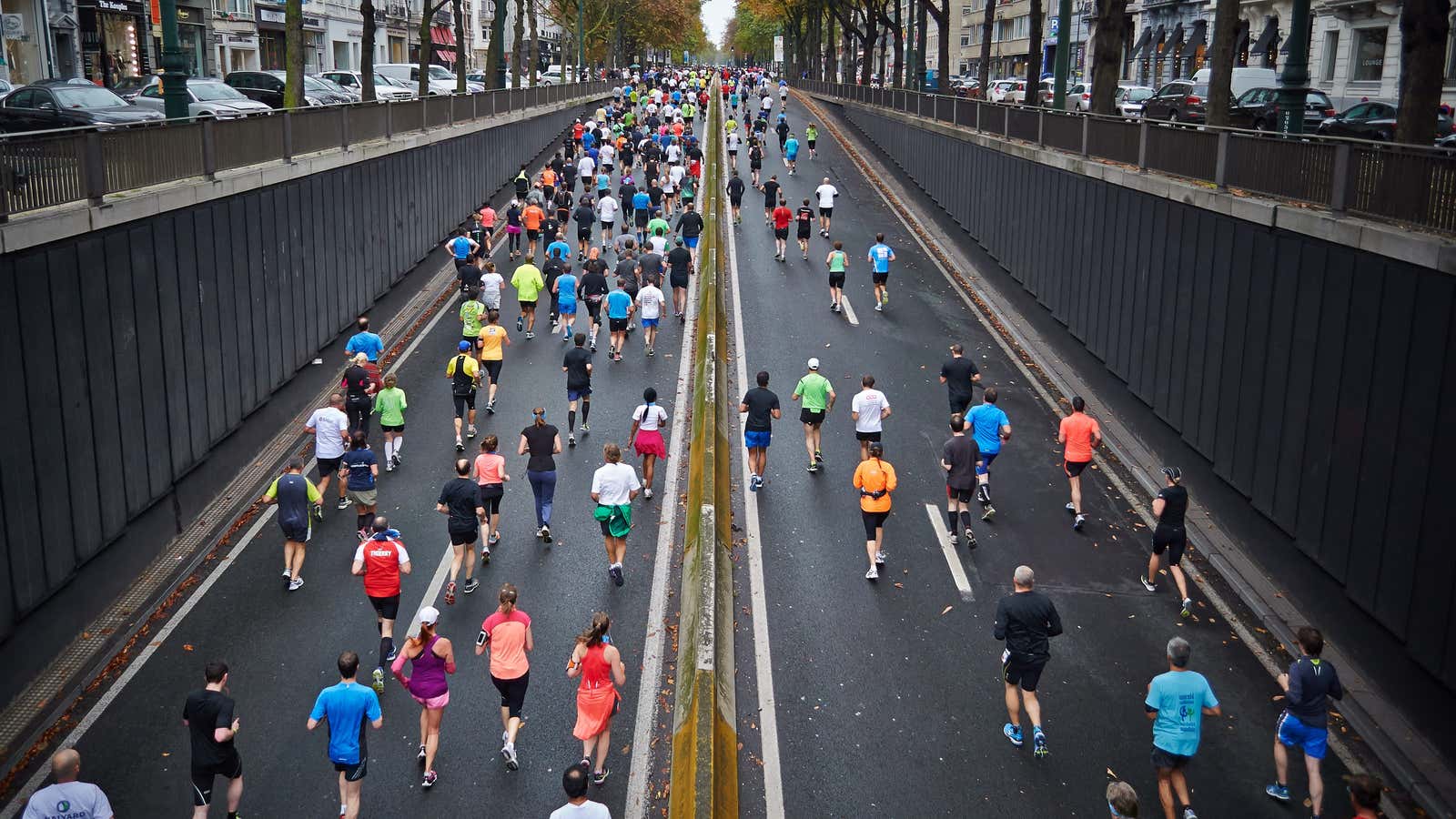Scientists studying the human body say we’re made to run. Our big toes, springy tendons and sweat glands reveal an evolutionary past when humans outran their prey, and rival carnivores, to secure protein for growing brains.
As modern humans, we are still drawn to running, even if most of us are rather bad at it. In 2015, more than half a million people voluntarily laced up their sneakers for a grueling 26.2-mile (42.2 kilometer) marathon race to the finish line. Despite having the best science of our species’ 200,000 year history, as many as 90% of us reportedly had significant pain and injury along the way.
Barry Smyth, a computer scientist at University College Dublin, wanted to put folkloric running advice on stronger scientific footing. As the author of more than 400 journal articles over the last 20 years, and an avid runner, he decided to analyze millions of marathon times around the world in his his “Running with Data” series published on Medium.
He’s tackling the conventional wisdom one axiom at at time. For his latest study, Smyth analyzed times for about 100,000 runners in the Dublin marathon between 2000 and 2015 to see how initial speed affects a runner’s race. Here’s what the study has to say:
Fast starters are the slowest finishers
Marathon runners know the advice: start slow. Yet 30% of runners simply ignored this advice running the first quarter of their races—the 10K leg—as their fastest. This was true across all ages. These sprinters finished the marathon on average 40 minutes later than those who stepped on the gas later in the race. The optimal strategy in the data? Go hard in the third leg (the 30K). The average finish time was 3 hours 50 minutes.
Hitting the “wall”
Treating the start of a marathon as a sprint has another downside. Marathon runners dread the moment known as “bonking,” or “hitting the wall,” when their legs turn to putty and there is no choice but to slow the pace. Smyth defined this as a 30% slowdown during the second half of the race.
Among those who hit this proverbial wall, more than 70% also ran their first 10 km as the fastest segment. Conversely, the slowest starters rarely hit the wall, and were able to increase their pace throughout the race.
Men, although faster on average, were the worst at this. Women proved far more disciplined pacers throughout the marathon, says Smyth. On average, women hit the wall two to five times less often than men, depending on their speed.
Runners get older—and wiser
First-timers are over-eager, but they do seem to learn their lesson. The vast majority of fast-starters were on their first race. The share dropped to 20% by their second, and fell steadily with each additional race. Dublin runners with five or more races composed just 1% or less of fast-starters.
Smyth is now working with more data—1 million runners—to pry more insights from the data for enthusiastic if not medal-winning runners like himself. “A lot of the research that is out there focuses on elites rather than everyday/recreational runners,” he wrote by email. “I’m interested in what we might learn about the latter.” That’s knowledge Smyth can apply when he runs his third Dublin marathon this October.
If you needed more proof that the slow and steady tortoise wins the race, someone has run the experiment:




